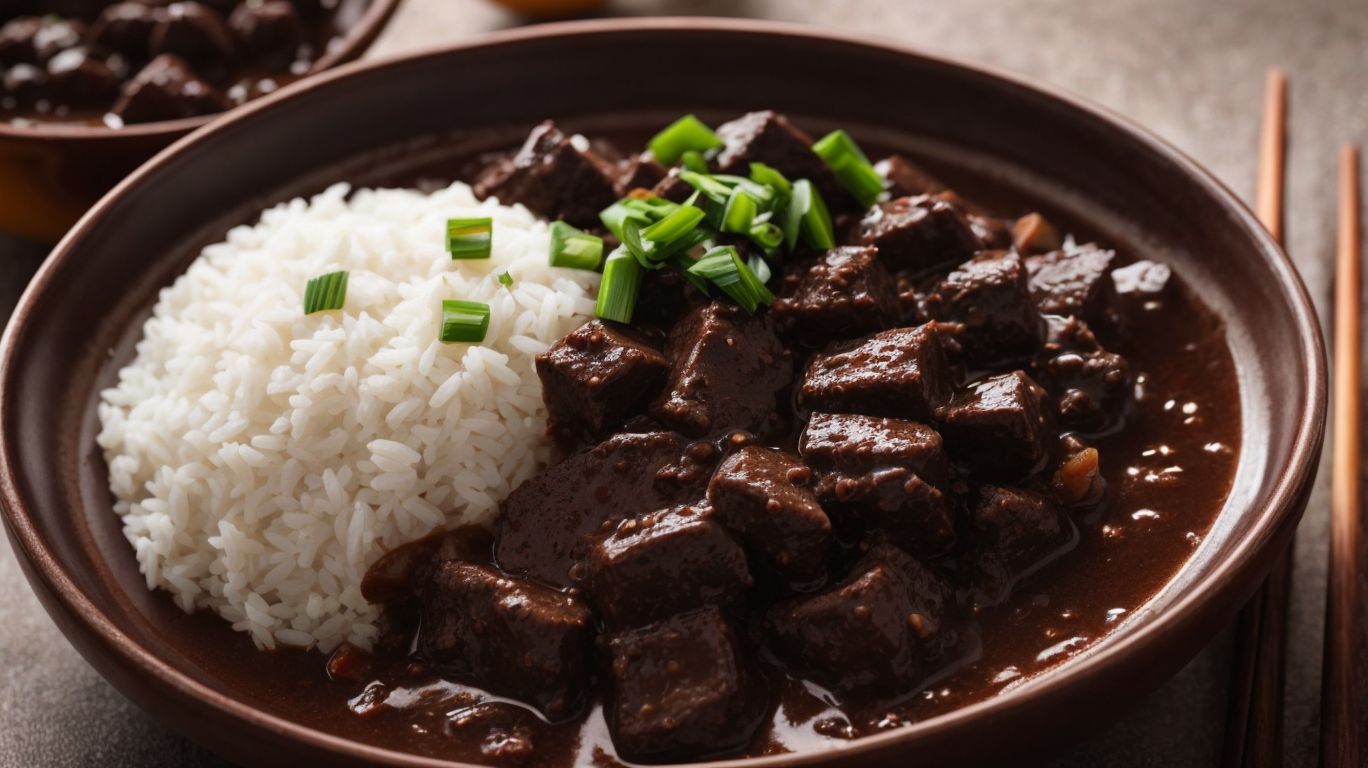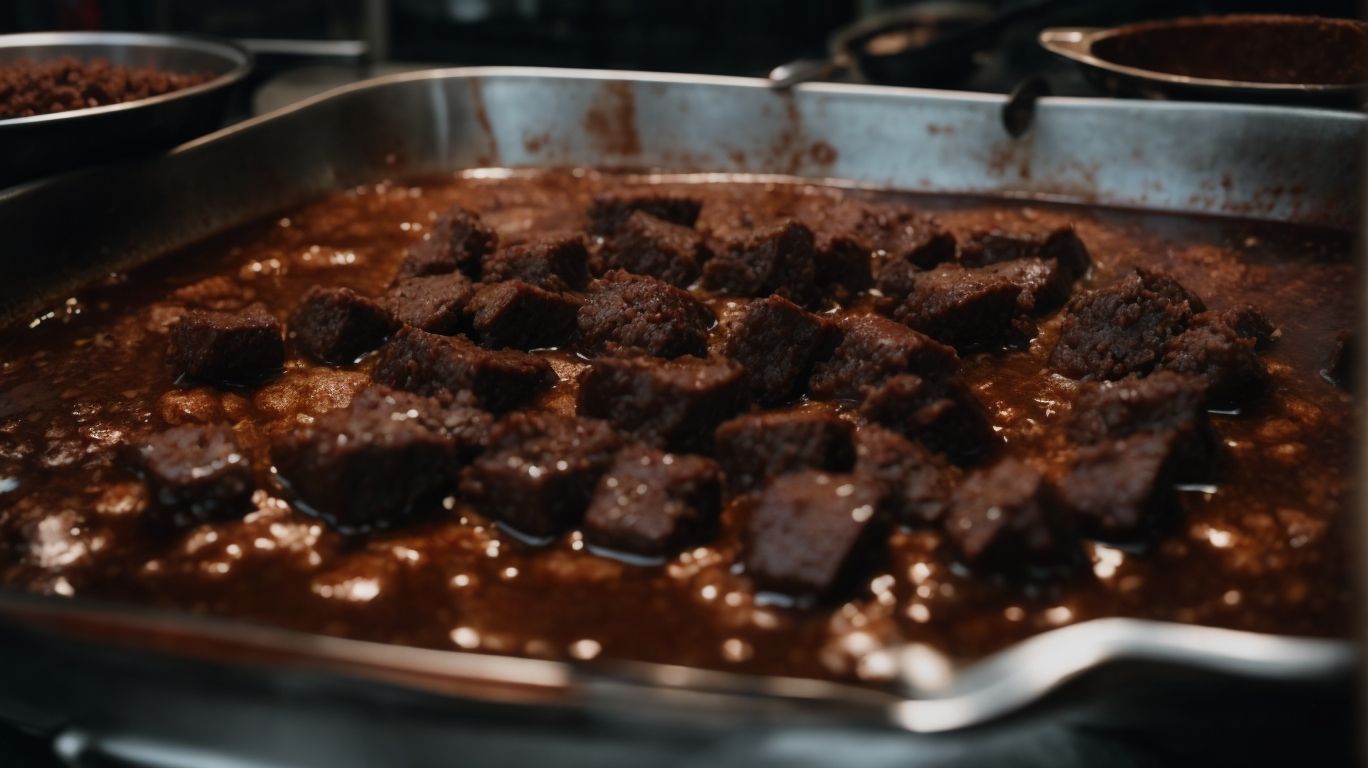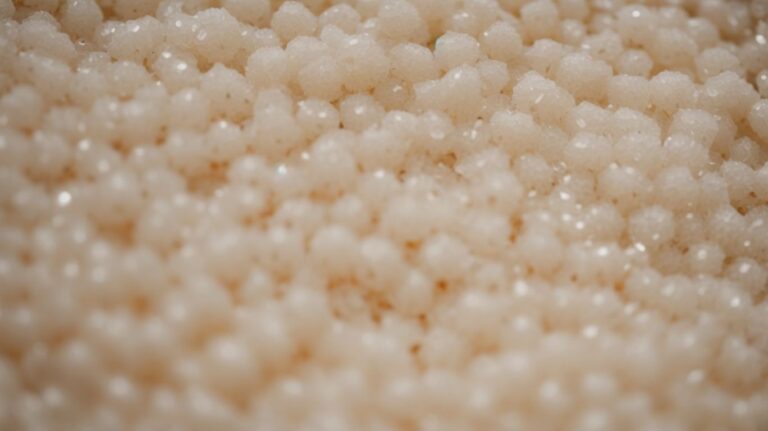How to Cook Dinuguan?
Curious about Filipino cuisine and want to expand your culinary skills?
Discover Dinuguan, a traditional Filipino dish known for its rich and savory flavors.
Learn about the history of Dinuguan, the key ingredients needed, and a step-by-step guide on how to prepare and cook it.
Whether you’re a seasoned chef or just starting out, we’ve got you covered with tips and tricks to achieve the perfect consistency and flavor.
Dive into the world of Dinuguan and impress your guests with this delicious dish!
Key Takeaways:
What is Dinuguan?
Dinuguan, also known as chocolate meat, is a traditional Filipino stew that hails from the Kapampangan region.
This beloved dish holds a special place in Filipino cuisine due to its rich cultural significance. Dinuguan is often referred to as “chocolate meat” because of its dark color and velvety texture. The origins of this flavorful stew can be traced back to the Kapampangan people, known for their culinary expertise. The key ingredients of Dinuguan include pork meat, blood, vinegar, and various spices, creating a savory and slightly tangy flavor profile. Different regions in the Philippines have their own variations of Dinuguan, with some adding ingredients like chili peppers, coconut milk, or even pineapples.
History of Dinuguan
The history of Dinuguan is deeply rooted in the vibrant tapestry of Filipino cuisine, offering culinary adventurers a delightful journey through flavors and traditions.
Dinuguan, also known as ‘chocolate meat’ or ‘blood stew,’ dates back centuries, tracing its origins to pre-colonial times. Initially, it was prepared using native ingredients like animal blood, vinegar, and various local spices. Over time, this dish has evolved into a beloved Filipino comfort food, cherished for its rich and savory taste.
Dinuguan is often enjoyed during festive occasions, bringing families and friends together to savor its unique flavors and the communal spirit it embodies.
Ingredients for Dinuguan
To prepare a savory batch of Dinuguan, gather essential ingredients like pork belly, vinegar, garlic, and onions for an authentic and flavorful experience.
The key to a delicious Dinuguan lies in the balance of its ingredients. Pork belly forms the rich and tender base of the stew, while vinegar adds a tangy kick that cuts through the pork’s richness. Garlic and onions provide depth and aroma, enhancing the overall flavor profile.
In different regions of the Philippines, variations of Dinuguan can be found. Some recipes include chili peppers for a spicy twist, while others incorporate coconut milk for a creamy texture. These unique ingredient combinations showcase the diversity of Filipino cuisine, each offering a different take on this beloved dish.
Meat Choices for Dinuguan
When selecting meat for Dinuguan, options like pork shoulder, offal cuts, and even intestine can be used to create a rich and flavorful pork stew.
Each meat choice offers a unique taste and texture profile to the traditional Filipino dish. Pork shoulder, often chosen for its tender and juicy qualities, adds a subtle sweetness to the Dinuguan. On the other hand, offal cuts like liver and heart bring a richer, earthier flavor that intensifies the overall depth of the stew.
Intestine, though less commonly used, provides a chewy texture and absorbs the flavors of the sauce exceptionally well, enhancing the overall complexity of the dish. The selection of meat plays a crucial role in determining the authenticity and richness of the Dinuguan recipe, catering to various preferences and palates.
Other Ingredients for Dinuguan
Plus the main meat components, Dinuguan requires a blend of seasonings like fish sauce, salt, pepper, and cooking oil to achieve a well-balanced and savory flavor profile.
Aside from the seasonings, the use of vinegar is another crucial element in cooking Dinuguan. Vinegar not only adds depth and tartness to the dish but also helps tenderize the meat.
- Garlic and onions play a vital role in providing aromatic layers to the dish, enhancing its overall taste.
- Some recipes call for the inclusion of green chili peppers to add a hint of spiciness, balancing the rich flavors of the pork and blood mixture.
The proper cooking technique, including simmering the ingredients slowly to allow the flavors to meld together, is essential in creating a delicious Dinuguan dish.
How to Prepare for Cooking Dinuguan?
Embark on the Dinuguan journey by preparing the necessary ingredients, exploring potential substitutes, and understanding the step-by-step cooking process for this classic Filipino dish.
Start by gathering pork shoulder, pork belly, garlic, onions, and vinegar as the core elements for the rich base of the dish. For those seeking alternatives, you can opt for chicken or even tofu for a different twist. The savory flavor heavily relies on the blood as a key component, traditionally pork blood, but some recipes adapt by using a roux or pig’s liver for a similar effect.
Preparation of Meat
Before diving into the cooking process, it’s crucial to prepare the meat by extracting protein albumin to serve as a natural thickener for the luscious pork blood stew that defines Dinuguan.
Extracting protein albumin from the meat is a pivotal step in the preparation of Dinuguan, as it plays a significant role in achieving the desired consistency and texture of the dish. This process involves simmering the meat in water until the proteins release, creating a rich, velvety texture to the stew. The albumin acts as a binding agent, enhancing the overall mouthfeel and thickness of the dish. Without this crucial step, the Dinuguan may lack the luxurious and indulgent quality that sets it apart from other Filipino stews. Incorporating this natural thickening agent not only elevates the flavor but also adds a unique depth to the culinary experience.
Cleaning and Preparing the Pork Blood
For a successful Dinuguan preparation, ensure the meticulous cleaning and preparation of pork blood while incorporating flavorful elements like Anaheim pepper and dry bay leaves for added depth of taste. Discuss proper storage methods, including freezer storage for long-term preservation.
To begin the cleaning process, start by carefully rinsing the pork blood under cold water to remove any excess blood clots or impurities. Gently squeeze the blood to ensure thorough cleansing.
Once cleaned, slice the blood into small pieces for even cooking and better absorption of flavors from the Anaheim pepper and bay leaves.
When seasoning the stew, remember to adjust salt levels accordingly to balance the richness of the pork blood.
Consider adding vinegar to enhance the overall taste profile of the Dinuguan.
Preparing the Other Ingredients
Apart from meat and blood, preparing the other ingredients such as granulated white sugar, Knorr Pork Cube, and long green peppers is essential to infuse the Dinuguan with a harmonious blend of flavors and textures.
Granulated white sugar acts as a balancing agent, cutting through the richness of the blood and meat to provide a subtle sweetness. The Knorr Pork Cube introduces depth and umami, enhancing the savory notes of the dish.
On the other hand, long green peppers not only offer a slight tang and freshness but also contribute a hint of mild heat, elevating the overall taste profile of the Dinuguan.
Incorporating these elements in careful proportions is crucial for achieving a well-rounded culinary experience, where every ingredient plays a significant role in creating a symphony of flavors that tantalize the taste buds.
Steps in Cooking Dinuguan
Follow a series of meticulous steps to cook Dinuguan, including sautéing green chili peppers and bay leaves to infuse the dish with the distinctive flavors of Kapampangan-style preparation.
Start by finely chopping pork belly and simmering it in water with vinegar until tender.
In a separate pan, sauté minced garlic, onions, and tomatoes until fragrant.
Add the simmered pork and pork blood, stirring continuously to achieve a rich, velvety texture.
Season with salt, pepper, and fish sauce for depth of flavor.
Let the flavors meld together while occasionally stirring to prevent sticking.
Serve hot and enjoy the complex and savory taste of this traditional Filipino dish!
Sauteing the Aromatics
Begin the Dinuguan cooking process by sautéing the aromatics to build a flavorful base, incorporating elements of traditional Filipino cooking and exploring the benefits of refrigerator storage for meal planning and leftovers.
In Filipino cuisine, sautéing aromatics like onions, garlic, and ginger is a crucial first step in creating depth and complexity of flavors in dishes like Dinuguan. The aroma that fills the kitchen as these ingredients sizzle in the pan sets the stage for a delicious meal ahead.
In terms of meal preparation, utilizing refrigerator storage can be a game-changer. Whether it’s marinating meat overnight or storing leftover Dinuguan for future consumption, refrigeration helps flavors meld and intensify, enhancing the overall taste of the dish.
Adding the Meat and Other Ingredients
Incorporate the prepared meat and other essential ingredients like steamed rice, puto rice cakes, and brown sugar into the simmering pot to create a harmonious blend of flavors and textures in the Dinuguan.
Adding the prepped meat infuses the dish with a rich and savory taste, while the steamed rice contributes a subtle and comforting base to balance out the bold flavors.
The addition of puto rice cakes adds a unique texture and a hint of sweetness, enhancing the overall mouthfeel of the dish.
The brown sugar provides a touch of sweetness that helps to round out the flavors and create a perfect harmony of salty, sweet, and savory notes in this traditional Filipino delicacy.
Cooking the Blood Mixture
To achieve the perfect consistency and flavor, focus on cooking the blood mixture to the desired texture, exploring options for garnishing and enhancing the taste profile to tantalize the taste buds of diners.
When cooking the blood mixture for Dinuguan, it is crucial to achieve a smooth and thick texture that coats the back of a spoon. This texture aids in providing a rich and velvety mouthfeel that enhances the overall dining experience. Incorporating ingredients like vinegar, chili peppers, garlic, and onions during the cooking process not only deepens the flavor but also adds layers of complexity and depth to the dish.
For innovative garnishing, consider topping the Dinuguan with crispy pork cracklings or chicharrones to add a delightful crunch that contrasts with the smoothness of the blood stew. A sprinkle of chopped green onions or a drizzle of coconut cream can provide freshness and balance to the dish, elevating its visual appeal and taste.
Tips and Tricks for Cooking Dinuguan
Discover valuable tips and tricks to master the art of cooking Dinuguan, including insights on enhancing the flavor profile, incorporating Kapampangan influences, and satisfying the discerning taste buds of diners.
Capturing the essence of Dinuguan lies in balancing its rich flavors with a subtle play of seasonings. To enhance the dish, consider simmering the meat and offal in a mixture of vinegar and pork blood to achieve that signature tangy yet savory taste. Kapampangan-style Dinuguan often incorporates unique ingredients like:
- lemongrass
- bay leaves
- crushed garlic
to elevate the aroma and depth of the stew. Remember, the key to a remarkable Dinuguan is adjusting the seasoning according to individual preferences, whether opting for a bolder, spicier kick or a milder, more balanced flavor profile.
How to Achieve the Right Consistency
Ensure the Dinuguan achieves the perfect consistency by following precise guidelines on reheating instructions, offering a warm welcome to diners looking to enjoy the dish even as leftovers.
For optimal retention of flavors, when reheating Dinuguan, it’s best to do so gently over low heat to prevent the dish from becoming too thick or lumpy. Adding a splash of fresh blood or vinegar during reheating can help to revive the tangy taste and ensure the dish remains rich and flavorful.
When storing leftover Dinuguan, transfer it to an airtight container to maintain freshness. To reheat, consider using a double boiler or microwave to avoid overheating, which can alter the texture and taste.
How to Adjust the Flavor
Experiment with various techniques to adjust the flavor of Dinuguan, incorporating culinary tips, and exploring innovative ingredient combinations to tailor the recipe to your unique preferences.
One way to enhance the richness of Dinuguan is by adding a hint of chocolate to complement the savory flavors. This unconventional twist can elevate the dish to a whole new level of indulgence. Balancing the acidity with a splash of vinegar or incorporating subtle sweetness from ingredients like sugar or coconut milk can fine-tune the taste to suit your palate.
For those who prefer a spicier kick, introducing chopped chilies or a dash of hot sauce can provide a fiery burst of flavor. Don’t be afraid to experiment with seasonings such as bay leaves, peppercorns, or even a touch of fish sauce to add complexity and depth to the dish.
Serving and Presentation of Dinuguan

Credits: Poormet.Com – Kenneth Jones
Elevate the dining experience by mastering the art of serving and presenting Dinuguan, a flavorful stew that encourages communal dining and celebrates the rich flavor profile of Filipino cuisine.
When serving Dinuguan, consider using traditional Filipino wooden bowls or banana leaves as vessels to enhance the cultural experience and authenticity of the meal.
Plating techniques that involve drizzling coconut cream in a circular motion on top of the stew can create a visually appealing contrast against the dark color of the dish. Garnishing with fresh cilantro leaves, crispy pork cracklings, or thinly sliced red chili peppers not only adds color and texture but also elevates the overall taste experience.
For a modern twist, try serving Dinuguan in individual mini cast-iron pots or on a bed of sautéed spinach for an elegant presentation that is sure to impress guests.
Best Side Dishes for Dinuguan
Complement the robust flavors of Dinuguan with the perfect side dishes that delight the taste buds, such as savory gravy and fresh green chili peppers to add a kick of heat to the dining experience.
In terms of pairing with Dinuguan, the key is to strike a harmonious balance with the rich and bold flavors of the stew. One excellent choice is steamed white rice, which acts as a neutral base to offset the intensity of the dish and allows the savory flavors to shine through. A side of grilled eggplant or crispy fried pork belly can provide contrasting textures that elevate the overall dining experience. You can also consider serving a refreshing side salad with citrus dressing to cleanse the palate between bites and add a touch of brightness to each mouthful.
For those looking to add an extra layer of spice, pickled green chili peppers or a zesty salsa can bring a fiery kick that cuts through the richness of the pork blood stew. These accompaniments not only enhance the flavors but also provide a refreshing contrast that keeps each bite interesting. Cornbread or garlic bread are also excellent choices to soak up the flavorful sauce and add a comforting element to the meal. By incorporating these side dishes, you can create a well-rounded dining experience that satisfies all your flavor cravings and leaves you craving for more.
Garnishing and Plating Ideas
Transform the presentation of Dinuguan with creative garnishing and plating ideas, elevating the visual appeal of this blood sausage stew while enhancing the dish’s flavor profile through innovative cooking processes.
Consider topping the Dinuguan with a sprinkle of crispy chicharrones or cracklings, adding a delightful crunchy texture to contrast the velvety richness of the stew. Garnishing with a swirl of tangy balsamic reduction not only adds a pop of color but also a hint of acidity that cuts through the dish’s richness. For a modern twist, serve the Dinuguan in individual ceramic ramekins, each adorned with a vibrant edible flower for a touch of elegance and freshness.
Frequently Asked Questions
How to Cook Dinuguan?
FAQs:
1. What ingredients do I need to cook dinuguan?
To cook dinuguan, you will need pork meat, pork blood, vinegar, garlic, onion, and chili peppers.
2. How do I prepare the pork meat for dinuguan?
Cut the pork meat into small cubes and boil it until tender before adding it to the dish.
3. Can I use other types of meat for dinuguan?
Yes, other types of meat such as chicken or beef can be used for dinuguan, but pork is the traditional choice.
4. How do I prevent the pork blood from curdling?
To prevent the pork blood from curdling, add a little vinegar to it and mix it well before adding it to the dish.
5. What is the cooking process for dinuguan?
First, sauté the garlic and onion, then add the pork meat and cook until brown. Next, add the pork blood and simmer for a few minutes before adding the vinegar and chili peppers. Let it simmer until the sauce thickens.
6. Can I make dinuguan in advance?
Yes, dinuguan can be made in advance and stored in the fridge. Just reheat it before serving and add a little vinegar to refresh the taste.





